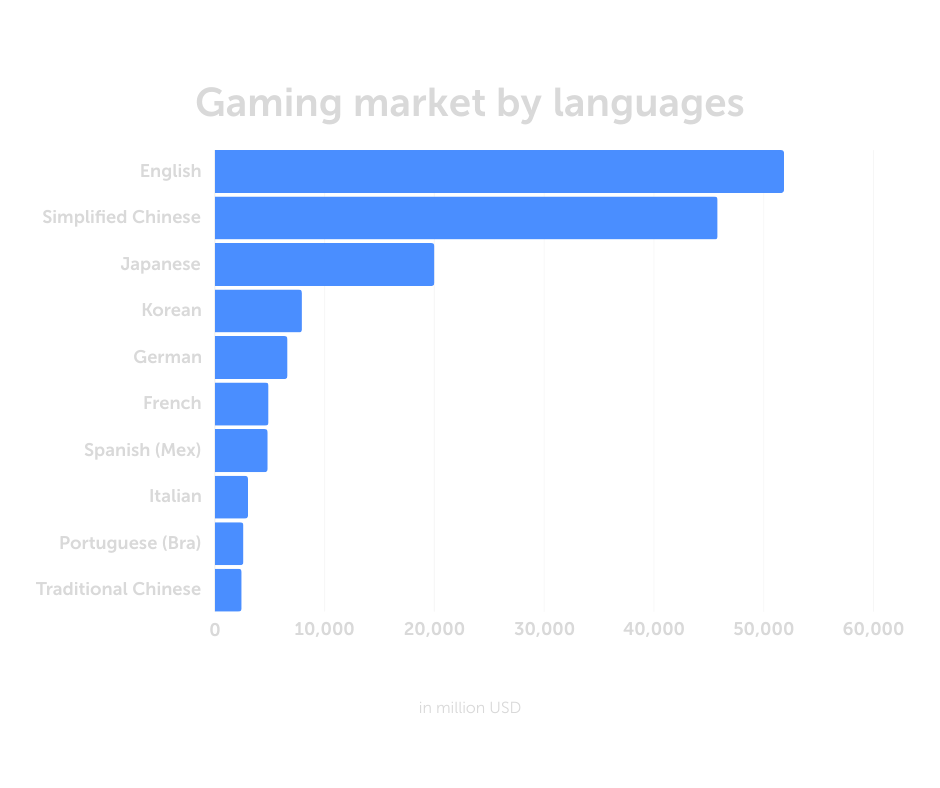New developers often wonder if their projects need to be localized. And then they wonder how to even start approaching localization! Let’s take a moment to answer your localization questions.
Localization experts all agree that the best time to consider game localization is before the development stage. It’s their dream situation when immediately after the app’s conception, at the stage of identifying target audiences, game creators are already planning for localization and taking culturalization into account.
In practice, however, this is rarely the case. Often, game localization is considered later on, after a game has achieved a measure of success.
What is Success?
Simply put, a game might be considered successful when the number of downloads and the money the project earns pay for the efforts spent on attracting new users (LTV > 3 × CAC).
To measure success, you should keep a close watch over these key metrics:
• Customer Acquisition Cost (CAC)
• Lifetime Value (LTV)
• Average Revenue per User (ARPU).
And keep an eye on these additional measures:
• Return on Investment (ROI)
• Player Retention
• Daily/Monthly Active Users (DAU/MAU).
Devtodev has some good materials on this topic of success. Ultimately, it helps you know why your players are paying and how successful your game is. When you know that, and your game has been successful in your home market, you will want to bring more joy to new players and earn money in other markets.
Half the World in a Single Click
To publish your game in global markets, you simply have to check a box, and the app will become available in 124 countries. If it’s that easy, is localization worth it? Why worry about localization and culturalization when the majority of users can play the app in English?



Keep in mind that players will likely be unhappy with an app missing localization. According to the Google Play Console Help Center, they will write about it in the comments and leave lower ratings than they otherwise would have done. Sure, you will see growth in downloads and revenue, but it will lower the revenue-to-download ratio and the app’s overall score in stores.

As you can see, a lack of localization negatively affects most key metrics for a game.
Localized Version is Fast, Recoupable, and Immediate
To positively affect key metrics, the best choice is to launch games with localization already completed.
ASO (App Store Optimization) experts believe that descriptions and screenshots in the users’ native languages positively affect ASO factors.

The localization will give you the unexpected bonus of a large number of free reviews from other countries. Several developers have told us that, for example, users from Arabic countries are generous with positive reviews, and at least one of the developers we surveyed is using this lifehack to increase the overall rating of their game.
It’s so nice when all of a game’s indicators grow. And although our study shows that localization does not necessarily lead to a significant increase in the number of installations, it does substantially increase the revenue-to-download ratio.

Correlation between revenue and localization in Japan according to our study (Sources: Statista, Newzoo, Steam Spy).

Correlation between revenue and localization in Germany according to our study (Sources: Statista, Newzoo, Steam Spy).
Localization Market Selection
How do you choose which markets to publish your game in when your budget is limited?
While there is no universal answer to this question, there are some key points to consider.
1. Language markets are not countries.

According to the analytic companies Newzoo and Statista, a remarkable 80% of mobile game revenue in 2018 will come from the markets in the top 6 languages (Russian should enter the top 6 in 2018). Only 10% of revenue will come from markets not included in this list.
Remember that English isn’t the only language in the USA, that Spanish is spoken outside of Spain, and that it’s best to use Mexican Spanish for Latin America.
2. Along with a market’s size, you may want to consider the difficulties of entering it. For example, there are censorship risks and special cultural characteristics in China, South Korea, and other countries. Pay attention to the return on traffic and user preferences, as well as monetization specifics, promotion, and the presence of popular local app stores.
3. EFIGS+CJK is not a panacea for the mobile app market. Different language combinations can be effective when localizing different game genres.
Conclusions:
1. Monitor key metrics.
2. Localize your application early.
3. Allocate a budget for the right languages (ask your localization expert for advice).
4. Estimate the return on localization.



